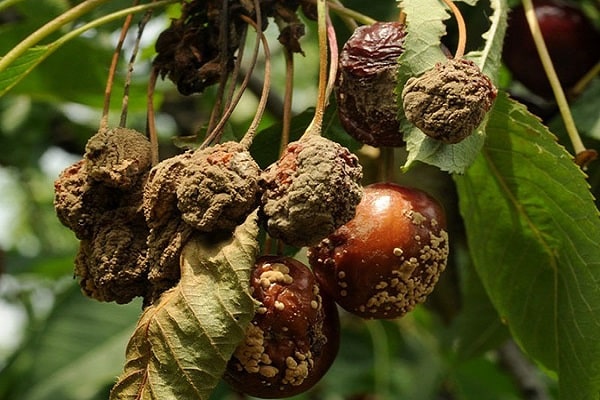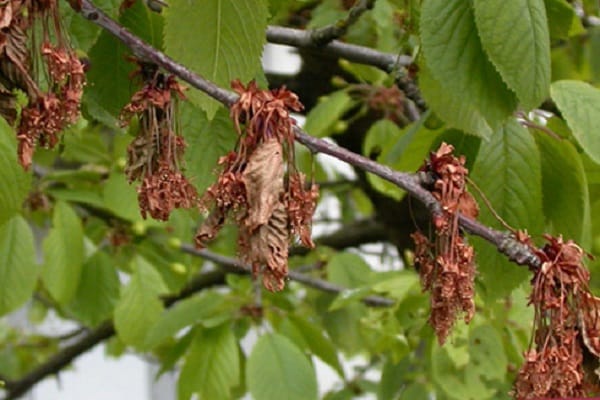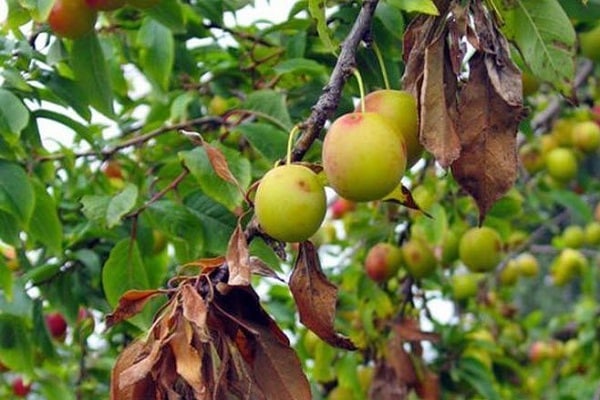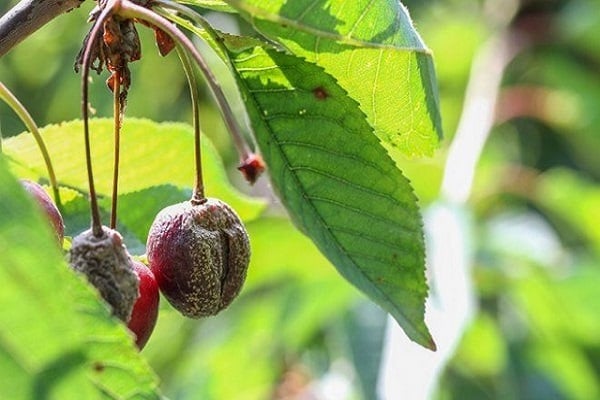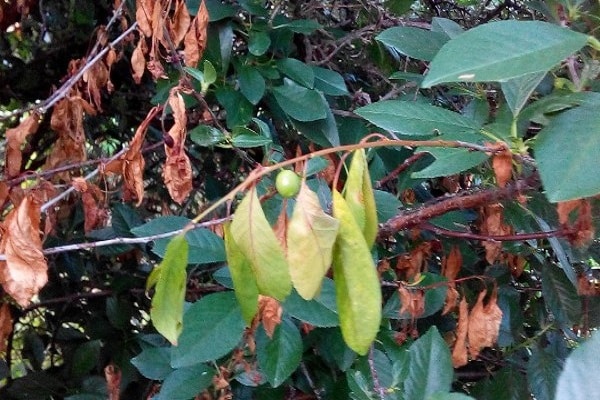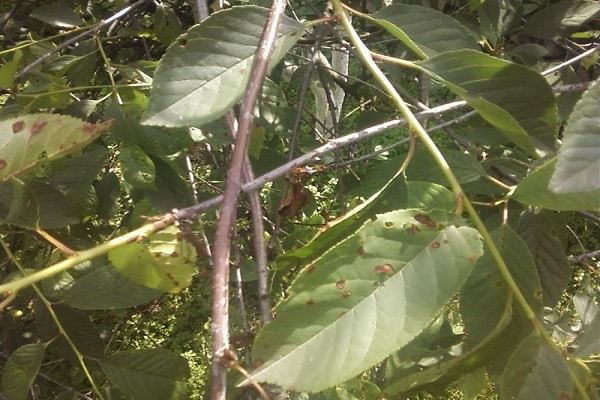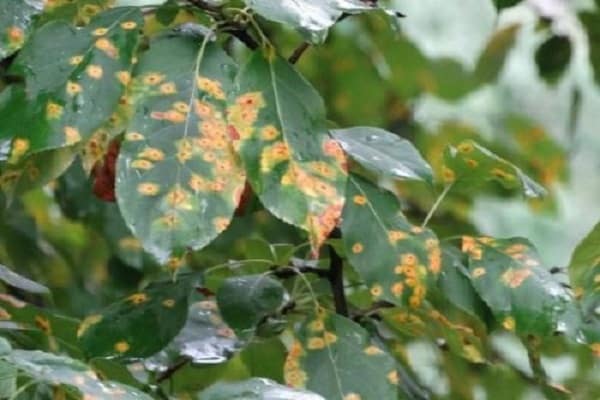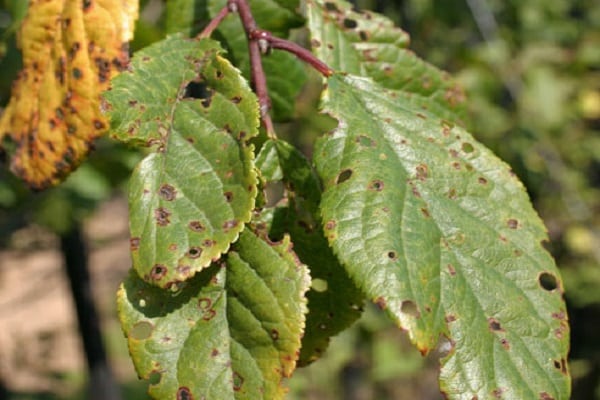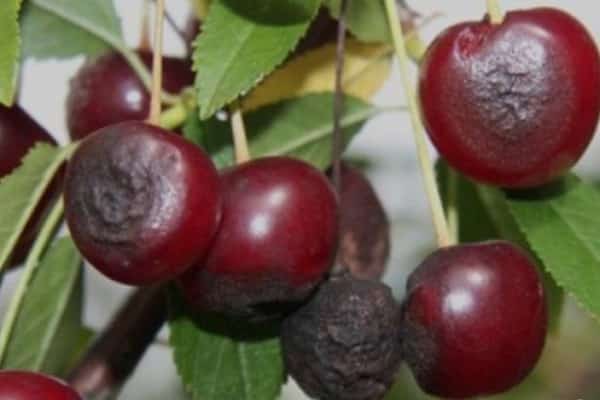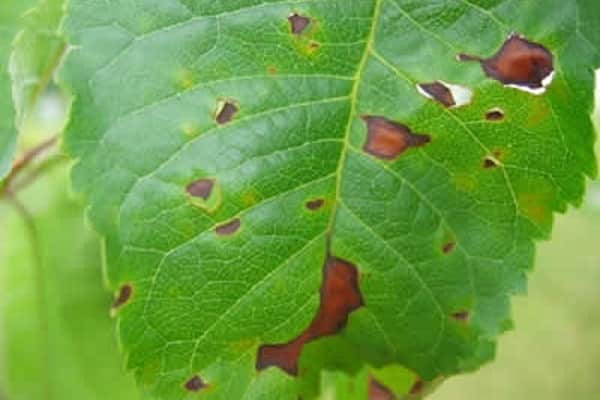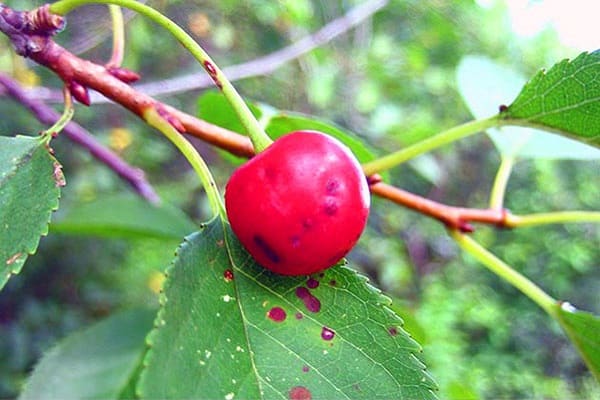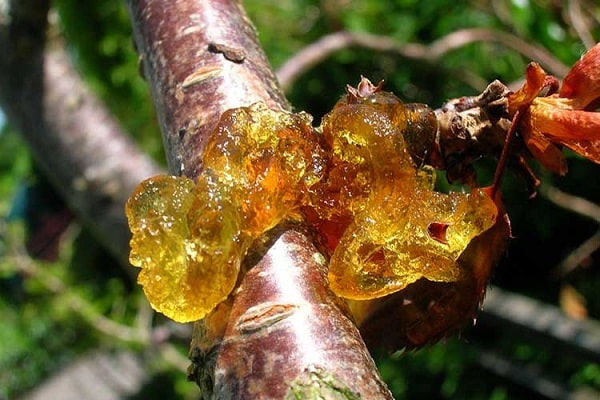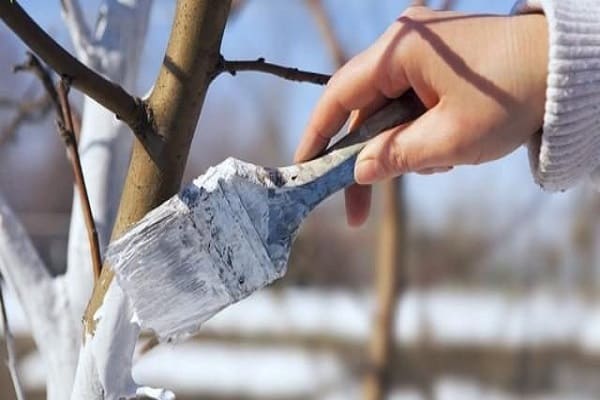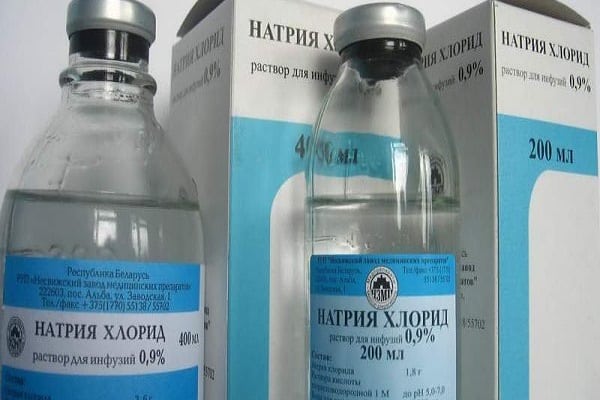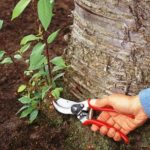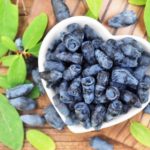Today, almost every garden plot of Russian gardeners can be found planting cherries. The versatility of the fruits of this tree makes it indispensable, since the berries can be eaten fresh and used as raw materials for preparing compotes, jams and desserts. At the same time, all efforts can be nullified by cherry disease, so it is important to know about the first signs of plant infection.
Why do cherries get sick?
A fruit tree may be weakened due to disease, its ability to bear fruit may be significantly reduced, and if left untreated, the plant may die. There can be many reasons for plant health problems, but they are all associated with the wrong variety, care, or neglect of preventive measures.
Unsuitable climatic conditions
The key to proper growth of sweet cherry varieties is the correct choice of variety. For regions with cold climates, it is worth choosing only winter-hardy varieties for planting, otherwise you should not count on plant survival and good yield. When choosing, you should pay attention to the following characteristics of the culture:
- ability to withstand low temperatures;
- stress resistance to return frosts;
- attitude towards excess moisture or excessive rainfall;
- self-fertility property;
- resistance to diseases.
It is worth giving preference to zoned varieties, as they are adapted for cultivation in specific areas. In the Moscow region, good growth and fruiting rates are observed in the following cherry varieties - Bulatnikovskaya, Shokoladnitsa, Anthracite.
Improper care
For good growth and yield of garden crops, it is important to follow the rules of care. Excessive moisture and lack of timely pruning increases the risk of disease. Improper fertilizing and excessive application of fertilizers to the soil lead to the same problems.
Cherries need to be planted in a well-lit area with sufficient light. Even slight shading can affect plant growth. Trees can be planted in spring and autumn; it is important to follow the recommended planting pattern for a particular variety.
Insufficient distance between two trees will lead to crowding and poor ventilation, which will significantly increase the risk of disease.
Unfavorable proximity to carriers of infections
When planting cherries on a site, it is important to take into account its compatibility with other fruit trees and shrubs, since an “unfavorable” neighborhood greatly increases the risk of disease. Tomatoes and peppers are considered dangerous crops for it, as they have common enemies. You should not place cherry trees next to birch, oak and maple trees.
Classification of diseases
All existing descriptions of cherry diseases can be classified into one of three categories - fungal, bacterial, viral. Each of them is characterized by certain symptoms, which can be easily determined by the appearance of the berries, leaf blades and shoots. Some of them can lead to loss of leaves and death of the tree.
Fungal
Infection of plants by a fungal disease can destroy 50 to 60% of the crop. Their classification is quite extensive, most often cherry trees are subject to scab, coccomycosis and rust. The anomaly can affect the fruit and affect the appearance of the leaf plates; in some cases, the layers of wood crack. Fungal spores survive the winter in fallen leaves and mummified fruits. In this regard, preventive measures involve burning them and spraying the plant with special preparations.
Bacterial
Bacterial diseases develop when cherries become infected with unicellular microorganisms through damage to shoots and green mass. Infected plants are often covered with a white coating, rot or a burn effect appears. Some types of bacteria can easily tolerate temperatures up to +25 0C and survive sub-zero temperatures.
They can be carried by natural precipitation, wind, people and gardening tools. Bacteria are often companions of aphids and mites. The main tool for preventing the disease is compliance with growing rules and timely use of insecticides to control pests.
Viral
Viral diseases are associated with infection of plants by microorganisms without a cellular structure, which are spread by sucking pests. When viruses enter cherry tissue, they begin to parasitize, which leads to weakening of shoots, inhibition of development and reduced yield.
The risk of increased infection with viral diseases increases during natural disasters, as a result of which damage appears on the cherries and they begin to dry out.
Common diseases and methods to combat them
Today there are a large number of cherry diseases, but each can be identified by external changes in the cherry tree. The list of required actions depends on the nature and cause of the infection.
Coccomycosis
The fungus infects the leaves, causing reddish dots to form on their surface. Over time, they begin to spread and occupy the entire area, eventually merging with each other. At a significant level of humidity, a pink coating can be observed on the back side of the sheet. The affected areas die and fall off, the leaves crack, and traces of lacerations appear on them.
The consequence of coccomycosis is a drop in yield and, in the absence of measures, the death of the plant. For treatment, spraying with a 4% solution of Bordeaux mixture and mechanical removal of lesions is used. There are cherry varieties that are resistant to fungal disease - Shokoladnitsa, Shalunya, Novella.
Moniliosis
Diseases of a fungal nature are often also called gray mold or monilial burn. Infection occurs through damage to the bark layer and develops at the time of inflorescence formation. Whitish pustules appear on the petioles and the lower surface of the leaf blades. Over time, brown spots appear, spreading over the entire surface of the leaves. The fruits become covered with yellow cushions, and they begin to fall en masse.
Treatment consists of removing damaged fruits, shoots and burning them. Spray with fungicides; in some cases, repeated repetitions will be required. It is possible to choose one of the following varieties - “Azocen”, “Topsin”, “Horus”.
Clusterosporiasis
It is quite difficult to get rid of clasterosporiosis on cherries, as the fungus affects all parts of the plant. Brown spots with a reddish border appear on the leaves. The lesions fall out, forming gaps, so the disease is often called perforated spotting.
The tree becomes covered with spots, at the site of which gum is released. The buds acquire a glossy shine and turn black. Fighting the fungus involves pruning and burning the affected areas. Spraying 3% Bordeaux mixture and destroying fallen leaves and fruits will help preserve cherries.
Anthracnose
The disease is a type of fungus. Pale dots appear on the fruits, which, growing, take the form of pinkish bulges. With insufficient moisture, the cherries dry out, turn black and begin to fall off. For treatment, spraying with fungicides, for example, Polyram, is carried out. The first treatment is done before and after flowering ends, the second is repeated after 15 days.
Rust
With this disease, cherry leaves are affected and yellow spots appear on them.Over time, they increase in size, the affected area swells and acquires a dark powdery coating. The leaves begin to curl and the plant weakens; resistance to frost or quality of fruiting may decrease. If measures are not taken in a timely manner, the cherries begin to dry out. In order to combat infection, Bordeaux mixture is sprayed and plant residues are promptly burned.
Scab
A fungal disease affects the leaves and berries of cherries, on which black velvety spots appear. The damaged area is bordered by a yellow stripe. At first, the anomaly appears on the leaves, but over time, dark formations spread to the fruits, which begin to crack and their development stops. To combat scab, use a 1% solution of Bordeaux mixture, spraying cherries before flowering, after and a month before harvest.
Gommoz
A characteristic sign of gommosis is the appearance of gum discharge. A common cause of tar formations is damage to the shoots, sunburn of the plant, or its inability to withstand frost. In some cases, infection with fungal microorganisms leads to the disease.
Treatment involves removing damaged parts of the plant, which are then burned. The cut areas are covered with garden pitch, having previously treated them with a 1% solution of copper sulfate. A good preventative measure is to whitewash cherry tree trunks in the off-season.
Preventive measures
Even the most disease-resistant cherry varieties will not be able to resist without preventive work, if the rules of care and cultivation are violated, and infection will occur sooner or later. In the presence of mechanical damage, injuries from frost or sunburn, the risk of problems increases significantly, so the influence of such factors should be excluded. Often the cause of disease in fruit trees is rodents, which damage the root system of the cherry and lead to its weakening, so their presence in the garden should be monitored.
Preventive measures include:
- carrying out timely pruning, eliminating old, damaged and signs of rotting branches;
- treating wounds and cracks with garden varnish;
- protection from pests and rodents;
- spring whitewashing of trunks.
Fertilizing with fertilizers will help strengthen the immunity of cherries. Such work must be carried out in the autumn, calculating the consumption rate depending on the manufacturer’s recommendations. At 1 m2 add to the soil:
- manure - 5 kg;
- potassium chloride solution - 150 g per 10 liters of water;
- superphosphate solution - 300 g per 10 liters of water.
To prevent the occurrence of diseases, trees are sprayed with fungicides. Work is carried out three times a year. The first procedure is done before the buds open, the second after flowering, the third at the end of the gardening season a month before picking the berries.

